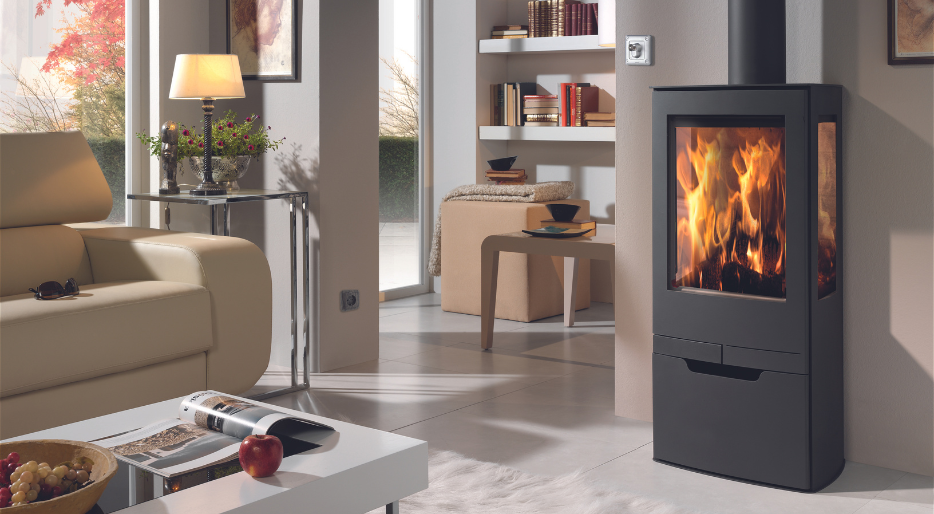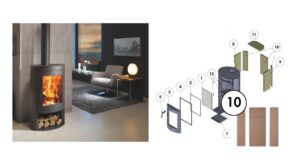
Although we enjoy the warmth of the fireplace, the odors can be unpleasant. With simple tricks like vinegar, salt, or baking soda, you can keep your home fresh and cozy.

The use of wood-burning stoves has been a common practice in many homes, as they provide warmth and create a cozy atmosphere. However, today, environmental awareness has led to increased regulation to ensure that these practices do not compromise our environment. This article explores the stove regulations that govern the use of wood-burning stoves and how they seek to transform these traditional heat sources into sustainable elements for our homes.
Wood-burning stoves have received increasing attention from environmental authorities due to their emissions and impact on air quality. Stove regulations have become a crucial tool to ensure that stoves are more efficient and environmentally friendly. The Ecodesign 2022 regulation has marked a milestone on this path towards sustainability. You can find out more about this regulation in this other article on our blog – NEW ECODESING REGULATIONS
Stove regulations not only seek to ensure efficiency, but also to minimize the harmful emissions associated with their use, thus creating a balance between home comfort and environmental responsibility.
Current regulations for wood-burning stoves focus on two key aspects: efficiency and emissions. Energy efficiency has become an essential criterion, requiring these heat sources to use firewood more effectively, thus reducing their overall environmental impact.
In this context, the firewood used must comply with regulations related to its humidity, since the use of wetter firewood tends to generate more smoke and harmful emissions. It is therefore recommended to use dry and well-stored firewood.
On the other hand, regulations impose strict limits on particulate emissions, seeking to mitigate adverse effects on air quality. This drives manufacturers to adopt cleaner and more advanced technologies, ensuring that wood-burning stoves contribute less to air pollution. Regulations often require wood-burning stoves to meet certain certifications and labels indicating their conformity to specific standards. This helps consumers make informed decisions when purchasing stoves.

The city where you live also affects stove regulations, highlighting three key approaches. First, Restriction Zones emerge as areas where stricter rules are imposed, especially in densely populated urban environments. Here, the need to control emissions and minimize environmental impact intensifies, driving regulations that seek to balance thermal comfort with environmental responsibility.
Second, Incentives and Exchange Programs are key tools to foster the transition to cleaner technologies. Not only do these regulations set standards, but they also offer economic incentives, such as trade-in programs that provide discounts or financial aid to those who choose to upgrade their old stoves to more efficient and eco-friendly models. This initiative seeks to catalyze the shift towards more sustainable practices in the use of firewood.
Thirdly, the Inefficient Stove Ban stands as a decided measure in several places. These regulations go beyond simply setting standards and go so far as to implement bans or restrictions on the sale and use of inefficient wood-burning stoves that do not meet established environmental standards. This straightforward approach seeks to phase out options that do not align with environmental goals and promote the adoption of more environmentally friendly technologies.
Taken together, these approaches demonstrate the authorities’ ongoing commitment to finding a balance between home comfort and environmental sustainability.
The importance of stove regulations is reflected in their ability to promote more sustainable practices in the industry. Not only do these regulations act as protectors of the environment, but they also motivate manufacturers to innovate, offering more nature-friendly options.
In the specific case of Panadero Stoves, committed to quality and sustainability, adaptation to these regulations is not only a requirement, but an opportunity to lead the way towards more ecological and efficient wood-burning stoves.
In conclusion, stove regulations, with the Ecodesign 2022 regulation at the forefront, are transforming the wood-burning stove landscape. Not only do these regulations protect our environment, but they also spur design innovation and promote a more sustainable approach to enjoying the warmth and beauty of wood-burning stoves in our homes.
We hope this post has served as a guide. Take a look at our blog and find solutions and recommendations to help you with your fireplace or wood stove.
Did you like this article? If so, help us spread it 😊 . Click on the buttons below here and feel free to share it on your social networks!
Thank you for reading!
↓ ↓ ↓ ↓

Although we enjoy the warmth of the fireplace, the odors can be unpleasant. With simple tricks like vinegar, salt, or baking soda, you can keep your home fresh and cozy.

How to avoid dust in the house when using a wood stove: tips and tricks for a clean and healthy home

Learn how to remove mould from your wood for use by following the steps in this article.

All you need to know: what it is, uses and benefits of wood stoves
To provide the best experiences, we use technologies such as cookies to store and/or access device information. Consenting to these technologies will allow us to process data such as browsing behavior or unique identifiers on this site. Not consenting or withdrawing consent may adversely affect certain features and functions.

From December 19 to January 6, order a wood stove and receive the Helix log holder for free.